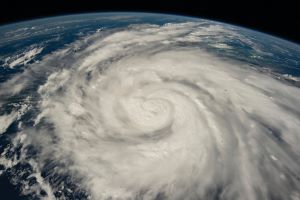Micro-environments and macro-environments, referring to the most intimate and the most global habitats, tend to receive considerable attention in discussions of determinants of health (DoH). What lies in the middle, however, may have a significant impact both on the forces that drive change and the consequences of such events. These intermediate habitats are referred to as regional environments.
Within the interdependent models of health determinants, regional environments are a growing area of study. Many facets of DoH – i.e., social, environmental, financial – are being examined at the regional level as factors of health disparities. Evaluating regional influence is also common to All-Hazards disaster response frameworks. Even when micro- and macro-environments are essentially the same, markedly different impacts across regional environments are possible. The comparative impacts of Hurricane Ian across 4 Florida counties will be summarized in this article, providing a powerful and relevant illustration of regional environments as determinants of health.
At both the state and county levels, Florida authorities and agencies are well versed in hurricane preparedness. The proposed track for Hurricane Ian, as well as the track the storm actually took, are well-trod by prior hurricanes including Charlie, Irma, and multiple unnamed storms over the past 50 years. Infrastructure has been upgraded and levels of preparedness were higher with this event than in prior years. But regional factors would prove to have significant roles on the drivers and consequences experienced by communities along Ian’s path.
Hurricane Ian made landfall with the leading eyewall – the most severe weather surrounding the eye – rated as a Category 4 major hurricane (Saffir-Simpson Hurricane Windscale). This occurred near Cayo Costa in Lee County at 15:05 EDT on Wednesday, September 28, 2022. Winds were sustained at 150 mph, bringing over 20 inches of rain and a 7-foot storm surge (water pushed ashore by high winds). While the storm surge did all of its damage on barrier islands and within a few miles of the coast, the rains and rain-related flooding represented an eerily consistent factor in the storm’s impact. Surrounding communities and even major interstates leading to and from Lee County were submerged by surface flooding from rain and rain runoff.
Less than 100 miles to the northeast, Polk County received the leading eyewall of Ian at approximately 01:00 EDT on Thursday, September 29, as a weak Category 1 hurricane. While wind speeds were sustained at only 75 mph at the Institute’s on-site wind turbine, rainfall also exceeded 20 inches and significant damages did occur. But topography and other regional factors affecting the environment, such as relatively decreased land development and increased capacity for drainage, resulted in a lesser degree of flooding.
Many have attributed the lesser degree of flooding of Polk vs Lee County to inland location and distance traveled by the storm . However, adjacent Osceola County suffered far worse flooding despite being an additional 40 miles northwest than Polk County. Hurricane Ian’s eyewall did not reach the town of Kissimmee (see on national news) in Osceola County until around 05:00 EDT that same morning. By then, Ian had become a strong Tropical Storm with sustained winds of less than 65 mph yet still delivering almost 20 inches of rain. The Kissimmee Chain of Lakes is located within Osceola County and forms the headwaters of Lake Okeechobee, the Everglades, and Florida Bay. This chain is composed of four major lakes totaling approximately 65,000 surface acres and feeds into a river that travels south to Lake Okeechobee, the Everglades, and Florida Bay. Despite lesser winds and no greater rainfall, this county suffered flooding of communities to depths exceeding 6 feet of standing water in homes, businesses, over roads, and flooded the local hospital. Regional environmental factors again altered the impact of the same event and similar total rainfalls.
Ian finally exited Central Florida and arrived in coastal Volusia County (another 80 miles to the northeast) at 13:00 EDT on Thursday, September 29. By then, wind speeds had fallen but 28 inches of rainfall would be recorded in the New Smyrna Beach areas. Like many areas, Volusia County experienced flooding but, despite significantly more rainfall, this region had far less flooding than Osceola County. Once more, regional environmental factors buffered the impact of the storm in a fashion more akin to Polk County than Lee or Osceola counties.
Disaster scenarios can provide strong examples of social, environmental, and financial health determinants that are affected by regional habitats. Across the One Health/All Hazards/One Framework paradigm, contributing factors within regions have the potential to mitigate and/or exacerbate determinants of health. These regional differences not only add to the complexity of predicting health and well-being outcomes but complicate the understanding of the cause and effect relationships across conceptual frameworks.
About the Authors
Allison A. Sakara, N.P., M.S.N., R.N., P.H.R.N.
Founder & Executive Director, High Alert Institute, Inc. (a 501c3 Not-for-Profit)
Most Valuable Hurricane Katrina Response Team Member, DHS/FEMA/ASPR
Maurice A. Ramirez, D.O., Ph.D.
Founder & Chairperson, High Alert Institute, Inc. (a 501c3 Not-for-Profit)
Recipient of the Lifetime Achievement Award in Disaster Medicine










